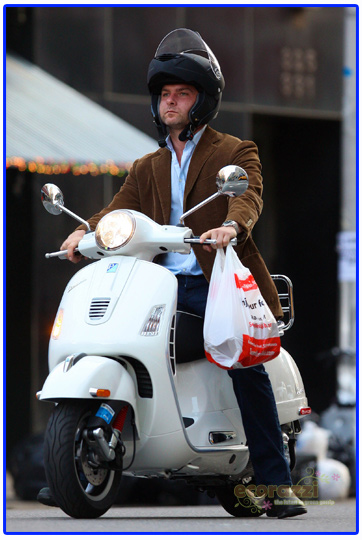The most recent owner/manufacturer of the Norton label claimed that he's only going to be capable of making 2000-4000 bikes a year because "Nortons are essentially going to be handmade . . . you simply can't maintain that level of quality and control with large-scale production."
Funny. Nortons have never been particularly famous for "quality," unless oil puddles, unreliability, and no competitive advantage in power, handling, or any other performance category has become a quality value. The definition of quality this corporate goof is using is one that is mostly centered around cosmetics and no-expense-spared handiwork. That's a definition that only the richest folks can appreciate.
 |
| 2010 Norton Commando 961 Cafe Racer |
For the rest of us, the modern manufacturing standard of quality will have to do: a quality product meets its customers' expectations. That's it. Japan practically perfected this standard and changed everything in the world of manufacturing in the process. Before the quality revolution of the 1960's and 70's, middle-class customers expected products from Detroit, American electronics manufacturers, and their appliances to have "personality." Personality means defects, glitches, and high maintenance. Most of us have places we want to go, people we want to meet, deadlines and schedules, and bucket lists. We don't have time for vehicles with personality, so we settle for real quality instead of the cosmetic kind.
If you are going to make that choice, your only option is to go for "large-scale production" products because that's where practical quality usually lives. One of the beauties of large-scale production is large-scale consumer feedback. Even in our age of passive consumers, a noticeable percentage of consumers still make the effort to complain when they get ripped off. That percentage might be less than 1%, but 1% of millions is still a pretty large collection of complaints. 1% of "2000-4000' is easily ignored. NTSHA might ignore 10 irritated Norton owners, but even a federal government agency pays attention to 20,000 complaints.
More importantly, the large manufacturer has the motivation and manpower and talent to squeeze failures down into the six-sigma territory. Although quality is largely taken for granted in modern products, the reason for that expectation is that modern products are largely very reliable. The reason that is true is because designers and manufacturing engineers have the resources and the skills to anticipate and resolve product reliability problems. A group of shade-tree mechanics working for a rich kid who is intent on burning up his trust fund won't be so inclined or gifted.
So, I'll just stick with boring, machine-made, engineer-designed production motorcycles and it won't even cross my mind that I would be happier with a boutique one-of-a-kind handmade bike. Besides, I'd have to decide between having a home or owning a rare piece of art and I'm not that interested in two-wheeled art.

